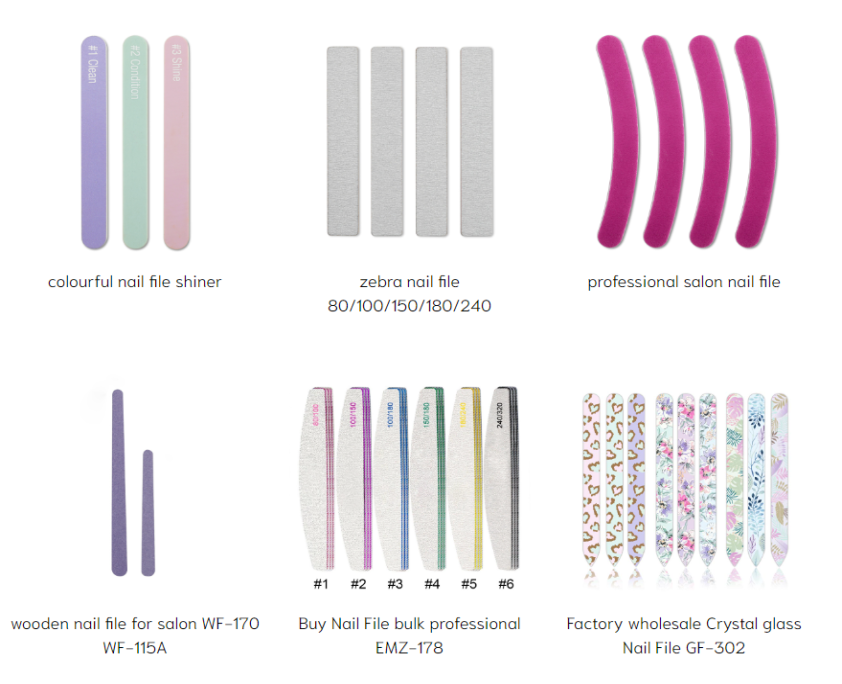Nail files are an essential tool for maintaining healthy and well-groomed nails. However, if used improperly, they can cause damage to the nails, leading to breakage, peeling, or even infection. In this article, we will discuss the potential harms of nail files and ways to prevent injury while using them.
Potential Harms of Nail Files:
- Nail Damage: The most common harm of nail files is that they can cause damage to the nails. Using a harsh or rough nail file or filing in a back-and-forth motion can weaken and thin the nails, making them prone to breakage and splitting.
- Nail Peeling: Over-filing with a rough nail file can also cause the nails to peel, resulting in thin, weak, and flaky nails. This can make the nails look unhealthy and unattractive.
- Nail Infection: Using a contaminated nail file can lead to nail infection. When a nail file is used on multiple people without proper sterilization, it can transfer bacteria and fungi, leading to infection or even nail fungus.
- Cuticle Damage: Filing too close to the cuticles or using a rough file can cause damage to the delicate skin around the nails. This can lead to inflammation, redness, and irritation.
- Pain or Discomfort: Using a file with a coarse grit or applying too much pressure while filing can cause pain and discomfort to the nails and surrounding skin.
Ways to Prevent Injury While Using Nail Files:
- Choose the Right Type of File: There are different types of nail files available in the market, including metal, glass, and emery boards. It is essential to choose a file that is suitable for your nail type. For example, metal files can be too harsh for thin or weak nails, while glass files are gentler and more suitable for delicate nails.
- Opt for a Fine Grit File: The grit of a nail file refers to its texture or roughness. Nail files with a higher grit, such as 400 or above, are suitable for shaping and smoothing the nails without causing any damage.
- File in One Direction: Filing in a back-and-forth motion creates friction, which can cause friction and lead to nail damage. It is recommended to file in one direction only, preferably from the sides to the center. This also helps in preventing splitting and peeling of the nails.
- Do Not Over File: Over-filing can weaken and thin the nails, leading to breakage and peeling. It is essential to know when to stop filing and avoid filing the nails more than once a week.
- Sanitize Your Nail File: It is crucial to sanitize your nail file regularly to prevent the transfer of bacteria and fungus. You can wash your nail file with warm soapy water, use an antibacterial spray, or wipe it with rubbing alcohol.
- Avoid Sharing Nail Files: Sharing nail files can lead to the spread of bacteria and infection. It is best to use your own nail file and avoid sharing it with others.
- Be Gentle on Your Cuticles: While filing, be careful not to file too close to the cuticles and use gentle strokes around that area. You can also use a cuticle oil or cream to protect the cuticles and keep them moisturized.
- Use a Nail Buffer: Instead of using a harsh file, you can opt for a nail buffer to smooth the nails’ surface. Buffing lightly helps in removing ridges and shines the nails, giving them a healthy look.
nail files can be harmful if not used correctly. It is essential to choose the right type of file, use gentle strokes, and avoid over-filing to prevent nail damage. Regularly sanitizing your nail file and using a nail buffer can also help in keeping your nails healthy and preventing injury. Remember, healthy nails are essential for overall hand hygiene, so take good care of them and visit a professional if you notice any signs of infection or damage.


